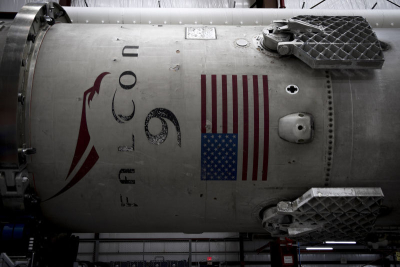Falcon 9 to be modified
The competition heats up: SpaceX is modifying its Falcon 9 rocket based on engine tests it performed on the December 22 returned first stage.
SpaceX will be making modifications to its Falcon 9 rocket based on what the company learned from re-igniting the engines on the vehicle it landed. That’s according to SpaceX president Gwynne Shotwell, who spoke about the state of the company today at the Commercial Space Transportation Conference in Wasington, DC. Shotwell didn’t specify what those modifications will be, but said the changes will make the vehicle “even more robust” for its ascent into space.
This report helps explain why SpaceX has pushed back all planned launches of the upgraded Falcon 9 rocket. Their tests of the returned first stage revealed issues that they think are important enough to be addressed before another rocket is launched, and they are proceeding to deal with those issues.
It also illustrates an enormous advantage they have over every other rocket company that has ever existed in the past. They, unlike all past rocket companies, actually have a used first stage that they can study to see the real consequences of launch and landing. All previous estimates of those consequences were only based on computer models and speculation.
The competition heats up: SpaceX is modifying its Falcon 9 rocket based on engine tests it performed on the December 22 returned first stage.
SpaceX will be making modifications to its Falcon 9 rocket based on what the company learned from re-igniting the engines on the vehicle it landed. That’s according to SpaceX president Gwynne Shotwell, who spoke about the state of the company today at the Commercial Space Transportation Conference in Wasington, DC. Shotwell didn’t specify what those modifications will be, but said the changes will make the vehicle “even more robust” for its ascent into space.
This report helps explain why SpaceX has pushed back all planned launches of the upgraded Falcon 9 rocket. Their tests of the returned first stage revealed issues that they think are important enough to be addressed before another rocket is launched, and they are proceeding to deal with those issues.
It also illustrates an enormous advantage they have over every other rocket company that has ever existed in the past. They, unlike all past rocket companies, actually have a used first stage that they can study to see the real consequences of launch and landing. All previous estimates of those consequences were only based on computer models and speculation.

